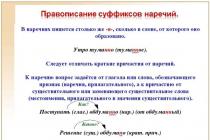In practice, there are often situations when a company needs to rename a position without changing the job function. An example is the desire to name a specialist’s position more euphoniously, more reputably, in order to make the best impression on the contractors with whom this employee interacts. The law leaves the company the right to make planned adjustments to the staffing table, but obliges it to obtain acceptance from a specialist and sign an additional agreement with him reflecting the essence of the changes that have occurred.
What is a position and job function?
Current legislation leaves the employing company the right to name the position of a specialist at its own discretion, if the chosen name does not affect the need to provide the employee with preferences and benefits. In order not to make a mistake, you should be guided by the provisions of the Handbook, approved by Order of the Ministry of Labor No. 37, adopted in 1998.
In practice, firms actively use freedom in job titles. For example, a personnel officer in different companies may be called an HR manager, a specialist in personnel selection and adaptation, a personnel inspector, etc.
The employee’s labor function is fixed in the contract signed by the specialist and the company’s staffing table. Its change entails the need to draw up personnel documents (order, additional agreement to the employment contract), and a proportional increase in the level of wages.
The following is recognized as a change in labor function:
- expanding the list of functions performed by a specialist;
- narrowing the range of tasks to be solved;
- changing certain responsibilities assigned to the employee to new ones.
Any modifications in the functionality performed are carried out with the written consent of the hired specialist. The company is obliged to notify him of planned changes no later than two months before they come into force.
The job title is a brief verbal description of the job function. These positions are in direct relationship: if an organization accepts a personnel inspector into its ranks, he will be assigned a set of tasks provided for by the “staff” for a specific position. You cannot change the job title to something else, for example, “HR specialist,” without permission.What should an enterprise do if it does not want to adjust the labor function of a specialist, but wants to name his position in the “staff” more solidly or euphoniously? The law leaves this right to the employer, but obliges it to obtain consent from the hired employee and sign an additional agreement with him.
Read also Series of work books by year of issue
The procedure for renaming an employee's position
From the point of view of the Labor Code of the Russian Federation, renaming a position is a change in the essential terms of the employment contract. This can be done in two ways:
- by agreement of the parties, the provisions of Art. 72 of the Labor Code of the Russian Federation;
- at the initiative of the employing company - the situation is regulated by the rules set out in Art. 74 Labor Code of the Russian Federation.
If the initiator of the change is the employer, he is obliged to send written notice to the employee no later than two months before the planned changes. Current legislation does not offer a unified form of the document. It is only stipulated that it must indicate the future name of the specialist’s position in the company, the reasons for the adjustments made (for example, reorganization of the department, changes to the staffing table, the use of new production technologies, etc.).
Important! The paper is handed over to the employee against signature or sent by letter with acknowledgment of delivery.The specialist who receives the notice usually agrees to the new terms. To confirm his acceptance, he writes “I have no objection” on the document and affixes his own signature.
Another option for developing the situation is the employee’s refusal. It should be noted that such an outcome is extremely unlikely: renaming positions is usually carried out in the interests of personnel. If the employee still does not agree with the changes, the company is obliged to offer him alternative positions (including lower paid ones) in writing. If none of the options suits the specialist, the employment contract will be terminated under clause 1, part 7, art. 77 Labor Code of the Russian Federation.
If agreement is reached between the parties, an additional agreement to the employment contract is signed two months after receiving the notification. It states:
- Document number and date;
- Company name;
- Full name and current position of the specialist;
- No. and date of the contract to which adjustments are made;
- No. of the amended paragraph and its new edition;
- an indication that the remaining provisions of the contract remain unchanged.
The additional agreement must be signed by both parties. It is prepared in two copies: one is stored in the personnel department of the enterprise, the second is issued “in hand” to the employee.

The staffing table is the main document of any organization, which determines its structural component, as well as the level of earnings for each vacancy. This standard can be corrected in two ways:
- issuance of an order with adjustments;
- drafting a new version of the main document.
The last method is relevant in cases where the changes made are large-scale. The legislation does not limit the time frame when a new standard can be issued.
Notification of staffing changes
Notification of changes to the staffing table is sent to employees in the following cases:
- when establishing a new salary;
- to rename a position or structural unit, the latter is relevant if it is specified in the employment contract;
- when transferring to another vacancy;
- when staffing is reduced.
There are also other cases where adjustments need to be made to those positions that are specified in the employment contract. Notification is provided when corrections affect employees. If there are none, then no one needs to be notified about making adjustments.
Do I need to approve the staffing table every year if there are no changes?
A separate issue is the frequency of amendments to this document. The legislation does not prescribe any restrictions in this regard. That is, you can change the document on the structure of the enterprise as many times as these actions become necessary. The main condition is compliance with the design.
Most often, the procedure for drawing up the main document provides for its approval for each year. The question arises whether it needs to be changed if there are no changes. Since the annual renewal of the document is a recommendation, there are no regulations on the mandatory nature of this procedure. That is, if there are no changes, there is no need to create a new edition.
Order to change salaries due to changes in staffing
Salary change is a pressing issue that has its own solution procedure. The main aspect to pay attention to is the presence of interested employees. If a vacancy is available, then to make amendments it is only necessary to issue an appropriate act with amendments.
If there are busy employees, you need to coordinate the adjustments made with them. indicates that notification of changes to the salary must be sent to the employee no later than two months before the amendments come into force. Especially when it comes to reducing your earnings. If the employee agrees with the adjustments, an additional agreement to the employment contract is also drawn up.
Corrections to the staffing table during indexation and salary increases are carried out according to a similar procedure. To put the adjustments into force, after agreement with the employees, a corresponding order is issued. It indicates the document number, as well as those provisions that need to be changed.
Order to change the staffing table - introduction of new positions
Changes in staffing due to introduction of a new position also accompanied by documentary support. Depending on the scale of the changes made, this may be either a separate order attached to the main document or a new edition. The second option is relevant in a situation where a large-scale reorganization of the company is being carried out.
An important point that you need to pay attention to when drawing up an order is the justification for the adjustments made. This role may be due to one of the following reasons:

- expansion of the company, attracting more employees and increasing the volume of activities;
- restructuring of a separate division, service or editing of positions;
- measures to redistribute functional responsibilities between vacancies.
Often such adjustments affect not only the correction of the structure, but also the registration of a new salary level.
Making changes to the staffing table - adding a staff unit
Many employers wonder whether it is worth drawing up a separate act if only the number of employees employed in the specified position needs to be corrected. There are two options for solving this problem:
- if there is a decrease in the number of employees, then such actions are a reduction in staff and are formalized accordingly;
- if new units are added, then this procedure is drawn up in accordance with the procedure for adding a new position.
The second option involves issuing a separate order with appropriate amendments. It is drawn up according to the same model as a similar document.
Change in staffing due to renaming of position
Order to rename a position in the staffing table is drawn up if the employee working in this vacancy has been notified and agrees with the amendments. The notification, as in the case of salaries, is sent two months before the new edition comes into force.
An important point is the need to complete all documentation. prescribes that the name of the position held must be indicated in the employment contract. Accordingly, a change of name must be accompanied by the drawing up of an additional agreement to it. Internal regulations must also be put in order - personal cards of employees, instructions, regulations.
Transfer to another position due to changes in staffing
An order to change a position in the staffing table may lead to personnel changes. For example, the creation of a new department requires the transfer of some employees to new vacancies. In this situation, the registration procedure will be similar to renaming.
The employee is notified, and if he agrees, all necessary documents are prepared. The main one is the additional agreement to the employment contract. It is also necessary to enter information about the transfer into the employee’s personal card, as well as his work book.
Order to change the staffing table due to staff reduction
Reduction of staff and entry of relevant information into the staffing table is carried out through a separate order. If the vacancy being reduced includes employees, then Article 180 of the Labor Code of the Russian Federation they must be notified of such actions two months in advance.
An order to reduce staff must contain the following information:
- the basis for which there was a need to cut jobs must be indicated;
- indication of vacancies, number of places and structural departments that are being abolished;
- the dates on which the document comes into force are indicated;
- it is prescribed to bring internal documentation into compliance with the new provisions.
Such a document must be signed by all persons affected by it. A separate application may contain a list of employees who are being laid off, indicating their familiarization and agreement with the measures being taken.
In accordance with Art. 57 of the Labor Code of the Russian Federation, the name of the position in accordance with the organization’s staffing table refers to the mandatory conditions of the employment contract. Therefore, changing it entails changes not only to the staffing table, but also to the employment contract.
Within the meaning of Art. 15 and parts of the second article. 57 of the Labor Code of the Russian Federation, the name of the employee’s position is one of the characteristics of his labor function. In accordance with Art. 72.1 of the Labor Code of the Russian Federation, a permanent or temporary change in an employee’s labor function is a transfer to another job.
The order of translation should be as follows:
1. Within the meaning of Art. 72 of the Labor Code of the Russian Federation, the parties have the right, by agreement, to change any terms of the employment contract determined by them. Therefore, it is necessary to formalize an agreement to change the position title in the form of an additional agreement to the employment contract, which stipulates all changes made to it, including the date of transfer.
The additional agreement signed by the parties will be an integral part of the employment contract and at the same time a document confirming the employee’s consent to the transfer.
A new employment contract should not be concluded.
The change in job title must also be reflected in the job description (if any). Moreover, if the job description is drawn up as an annex to the employment contract, it is enough to fix this change in the mentioned additional agreement without signing the instructions in the amended version.
The employer changes the job description approved as a local regulatory act by his order. The employee must be familiarized with the changes against signature (Article 22 of the Labor Code of the Russian Federation).
2. Changing the name of a position entails making changes to the staffing table, the unified form of which was approved by Resolution of the State Statistics Committee of the Russian Federation dated January 5, 2004 N 1 (hereinafter referred to as Resolution N 1).
According to the Instructions for the use and completion of forms of primary accounting documentation for the accounting of labor and its payment, approved by Resolution No. 1, the staffing table is approved by an order (instruction) signed by the head of the organization or a person authorized by him to do so. Changes to the staffing table are also made in accordance with the order (instruction) of the head of the organization or a person authorized by him to do so. Changes in the staffing table must be made known to those employees who are affected.
3. On the basis of an additional agreement, the employer issues an order (instruction) to transfer the employee to another job according to the unified form N T-5, approved by Resolution No. 1. We note that upon the application of the employee, the employer is obliged to provide him with a certified copy of this order (instruction) (Article 62 Labor Code of the Russian Federation). Based on the transfer order, marks are made in the employee’s personal card (Form N T-2, approved by Resolution No. 1), as well as on his personal account (Form N T-54 or N T-54a, approved by Resolution No. 1).
4. According to part four of Art. 66 of the Labor Code of the Russian Federation, information about transfers to another permanent job is entered into the employee’s work book. The procedure for maintaining work books is regulated by the Rules for maintaining and storing work books, producing work book forms and providing them to employers, approved by Decree of the Government of the Russian Federation of April 16, 2003 N 225 (hereinafter referred to as the Rules). The procedure for filling out work books is established by the Instructions for filling out work books, approved by Resolution of the Ministry of Labor of the Russian Federation dated October 10, 2003 N 69.
In accordance with clause 10 of the Rules, all entries about work performed, transfer to another permanent job are entered into the work book on the basis of the relevant order (instruction) no later than a week.
Clause 3.1 of the Instructions stipulates that in column 3 of the “Information about work” section of the work book, entries about the name of the position (job), specialty, profession indicating qualifications are made, as a rule, in accordance with the organization’s staffing table.
The entry in the work book about transfer to another job will look like this:
the serial number of the entry is entered in column 1 of the “Work Information” section;
in column 2 - date of transfer;
in column 3 it is written: “Transferred to the position of secretary-operator”;
Column 4 indicates the date and number of the order (instruction) for the transfer.
Prepared answer:
Expert of the Legal Consulting Service GARANT
Gabbasov Ruslan
Response quality control:
Reviewer of the Legal Consulting Service GARANT
Barseghyan Artem
The material was prepared on the basis of individual written consultation provided as part of the service
In order to keep up with rapidly changing trends in the work environment, the management of a particular organization is renaming job titles. Agree, it would seem strange if a stylist or hairdresser in the 21st century were still called a barber, and cooks were still called cooks. The same thing happens with regular professions, but the renaming process has some nuances. How to prepare the necessary documents?
Is it possible to rename a position in the staffing table?
How to rename a position without changing the job function?
The title of the job position acts as the main component of the labor function of the personnel - what he works with. Thus, a change in job title is followed by a change in job function, which means that in fact there is a transfer to another job position. How can this be avoided?
When adjusting job titles, it is imperative to indicate innovations in the employment contract, staffing table, as well as information entered into the work book.
If the renaming of the job position changes along with the list of powers and responsibilities, then registration of the employee’s transfer is inevitable. But there are cases when, in fact, nothing except the name changes.
Let’s say V. Slozhenitsky, formerly an ordinary janitor, was renamed “personnel cleaning.” Then it's possible:
- Drawing up a notice of renaming an employee’s job position in the staffing table without changing his work functions. Within two months, the employer is obliged to familiarize the subordinate with the notice (the document must be secured with signatures);
- Drawing up an additional agreement on the introduction of new conditions in the employment contract;
- Drawing up an order document in which it is necessary to clearly describe what is being replaced by what;
- Making a corresponding entry in the employee’s work book.
This way you can avoid issuing a transfer order, that is, changing your work function.
Procedure for renaming a position
When management decided to replace job titles - rename them, in strict order it is necessary to prepare:
- notification of personnel about the innovation (2 months in advance);
- additional agreement to the employment contract;
- order to adjust the job title;
- entering innovations into the staffing table and “service record”.
The voluntariness of the employee himself, in relation to whom these “reforms” are taking place, is important. If he has given his permission, then the employer interested in this must:
- Draw up a notification statement about the renaming of the “post” he occupies. Moreover, the entry into legal force of the document begins after the employee writes “AGREE” and signs;
- Draw up an additional agreement to the employment contract, where the position title will then be corrected;
- Referring to the above documents, an order is issued, which is also signed by the parties;
- Either create an order to reform the staffing table, or fix a new staffing table;
- Write in the labor record: “The job title “janitor” has been changed to “cleaning staff.”
If an employee refuses the ongoing “reforms”, the points provided for .
How to rename an employee's position
The law does not provide for a strict procedure for renaming an official position.
Let us imagine the most common scenario for the development of events in this procedure:
- It is necessary to introduce a new title of the required profession into the staffing table;
- Inform the subordinate whose position is to be renamed by having him sign the notice and a copy of the agreement (he can either agree or refuse);
- Issue an order. The latter is considered the main document confirming the change of the employee’s job title;
- Such an order will officially save information in employee cards in the “Work book” and “Position held” tabs;
- Next, it is important to formalize the transfer of the employee to a formally new job (according to the law, the procedure for changing the name of a job position is a transfer to another job). Thus, the previous position is removed from the staffing table.
Order to rename a position - sample
In this order, control over compliance with its provisions is the responsibility of the employer. In order to insure against unforeseen circumstances, it is recommended to draw up the document in duplicate.
Sample notice of renaming a position
protects the employed population: if the personnel refuses the proposal to rename the position, they will find another type of activity in this enterprise. If none of the prospects suits him, then soon instead of a notice he will have to sign a termination of the employment contract, namely, dismissal is coming. Therefore, employees are recommended to immediately agree to the demands of their superiors.
Work book entry - sample
When filling out, remember that all information is entered on the basis of the relevant order of the manager within a strictly limited period - one week (from the date of the order).
It is also necessary that the information entered in the work book coincide with the main point of the order.
Due to changes in the staffing table, several positions were renamed, for example, from “forwarding driver” to “car driver”. How to format this correctly? Is there a transfer of an employee from one position to another in this case?
Having considered the issue, we came to the following conclusion:
When renaming positions without changing the job function, transfer to another job does not occur. When renaming positions, it is necessary to make changes to, and make a corresponding entry in the work book.
Rationale for the conclusion:
According to Art. 57 of the Labor Code of the Russian Federation, an element of an employment contract is the employee’s labor function - work according to the position in accordance with the staffing table, profession, specialty, indicating qualifications; the specific type of work assigned to the employee.
As a rule, the title of the position changes simultaneously with the change in the scope of job responsibilities. In such a situation, the employee is transferred (Article 72.1 of the Labor Code of the Russian Federation).
However, in the situation under consideration, as follows from the question, the list of job responsibilities of employees, that is, the very content of the labor function, does not change; it is planned to change only the names of positions. We believe that in such a situation we are not talking about a change in the labor function of workers (Generalization of cassation and supervisory practice of the Irkutsk Regional Court on claims for reinstatement at work for 2007 and the first half of 2008).
However, both a complete change in the title of a position and a partial change, even if the content of the employee’s labor function remains unchanged, is a change in the terms of the employment contract.
By virtue of Art. 72 of the Labor Code of the Russian Federation, changes in the terms of an employment contract are allowed only by agreement of the parties in writing, with the exception of cases provided for by the Labor Code of the Russian Federation.
The Labor Code of the Russian Federation establishes exceptional cases when changes to the terms of an employment contract are allowed at the initiative of the employer. So, according to Art. 74 of the Labor Code of the Russian Federation, at the initiative of the employer, it is allowed to change any condition of the employment contract, except for the employee’s labor function, if the previous condition cannot be maintained for reasons related to changes in organizational or technological working conditions (changes in equipment and production technology, structural reorganization of production, other reasons ). The employer is obliged to notify the employee in writing of the upcoming changes to the conditions of the employment contract determined by the parties, as well as the reasons that necessitated the need for such changes, no later than two months in advance (part two of Article 74 of the Labor Code of the Russian Federation).
Within the meaning of Art. 74 of the Labor Code of the Russian Federation there must be a cause-and-effect relationship between changes in organizational or technological working conditions and the need to change the terms of the employment contract.
In the event of a dispute, the employer is obliged to provide evidence confirming that the change in the terms of the employment contract determined by the parties was a consequence of changes in organizational or technological working conditions, for example, changes in equipment and production technology, improvement of workplaces based on their certification, structural reorganization of production, and did not worsen the employee’s position in comparison with the terms of the collective agreement or agreement (clause 21 of the resolution of the Plenum of the Supreme Court of the Russian Federation of March 17, 2004 No. 2 “On the application by the courts of the Russian Federation of the Labor Code of the Russian Federation”).
In our opinion, it is quite difficult to imagine such organizational or technological changes in working conditions under which the previous job title could not be retained. Therefore, if such circumstances do not exist, the employer should invite employees to enter into written agreements with him to amend the terms of the employment contract regarding the title of the position.
Changing the name of a position entails the need to make changes to the staffing table, the unified form of which was approved by Resolution of the State Statistics Committee of the Russian Federation dated January 5, 2004 No. 1 (hereinafter referred to as Resolution No. 1).
According to the Instructions for the use and completion of forms of primary accounting documentation for the accounting of labor and its payment, approved by Resolution No. 1, the staffing table is approved by an order (instruction) signed by the head of the organization or a person authorized by him to do so. Changes to the staffing table are also made in accordance with the order (instruction) of the head of the organization or a person authorized by him to do so. The effective date of the amended staffing table must coincide with the date specified in the notification (if the name of the position is changed in accordance with Article 74 of the Labor Code of the Russian Federation) or in the agreement of the parties (if the position is renamed in accordance with Article 72 of the Labor Code of the Russian Federation).
According to part four of Art. 66 of the Labor Code of the Russian Federation, information about the employee and the work he performs is entered into the employee’s work book. The procedure for maintaining work books is regulated by the Rules for maintaining and storing work books, producing work book forms and providing them to employers, approved by Decree of the Government of the Russian Federation of April 16, 2003 N 225 (hereinafter referred to as the Rules). The procedure for filling out work books is established by the Instructions for filling out work books, approved by Resolution of the Ministry of Labor of the Russian Federation of October 10, 2003 N 69 (hereinafter referred to as the Instructions).
In accordance with clause 10 of the Rules, all entries about work performed, transfer to another permanent job are entered into the work book on the basis of the relevant order (instruction) no later than a week. Clause 3.1 of the Instructions stipulates that in column 3 of the “Information about work” section of the work book, the name of the position (job), specialty, profession with an indication of qualifications is indicated, as a rule, in accordance with the organization’s staffing table.
According to the same paragraph of the Instruction, changes and additions made in the prescribed manner to the organization’s staffing table are brought to the attention of employees, after which appropriate changes and additions are made to their work books on the basis of an order (instruction) or other decision of the employer. The Instruction does not provide for specific wording of the entry in the work book in connection with a change in the name of the position, if such a change did not entail a change in the employee’s labor function (job responsibilities).
We believe that in the case under consideration, the employer should, on the basis of an order to amend the staffing table, make an entry in the work book about the renaming of the position (for example, such an entry may look like this: “The position of “forwarding driver” has been renamed to “car driver”, and in Column 4 indicates the basis for the renaming - the employer’s order to change the staffing table, its date and number.) A similar entry must be made in the employee’s personal card, form T-2, approved by Resolution No. 1.
Prepared answer:
Expert of the Legal Consulting Service GARANT
Soloviev Oleg
Response quality control:
Reviewer of the Legal Consulting Service GARANT
Komarova Victoria
The material was prepared on the basis of individual written consultation provided as part of the service














